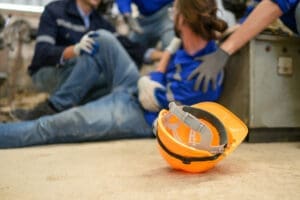In the realm of occupational hazards, few professions are as fraught with danger as towing. Tow truck drivers work tirelessly, often in adverse conditions and high-pressure situations, to clear roadways and assist stranded motorists. However, with this noble service comes inherent risks, and accidents can and do still occur despite stringent safety protocols. So, what should you do as an employer if your tow truck driver gets hurt on the job?
 10 Steps You Need to Take if a Tow Truck Driver Gets Hurt on the Job
10 Steps You Need to Take if a Tow Truck Driver Gets Hurt on the Job
1. Prioritize Immediate Medical Attention
The well-being of your employees should always be the top priority. If an accident or injury occurs, ensure the injured tow truck driver receives prompt medical attention. Depending on the severity of the injury, this may involve calling emergency services (911) or transporting them to the nearest medical facility. Immediate intervention can mitigate further complications and demonstrate your commitment to employee welfare.
2. Secure the Scene and Gather Information
Following the injury, it’s crucial to secure the accident scene to prevent further harm to anyone involved. If feasible and safe, document the scene with photographs or videos. Collect pertinent information such as witness statements, the nature of the accident, and any contributing factors. This documentation may prove invaluable for insurance claims or legal proceedings down the line.
3. Notify Relevant Authorities and Stakeholders
In accordance with legal requirements and company protocols, notify the appropriate authorities and stakeholders about the incident. This typically includes reporting the injury to occupational safety regulators and filing a report with your company’s human resources or safety department. Transparency and adherence to regulatory guidelines are essential during this phase to ensure compliance and facilitate a smooth resolution.
4. Provide Support and Assistance
An injury can be a traumatic experience for your employee, both physically and emotionally. Offer them the necessary support and assistance to navigate the aftermath. This may involve arranging transportation for medical appointments, facilitating access to counseling services, or providing updates on their rights and entitlements. Demonstrating empathy and solidarity can foster a sense of trust and loyalty within your workforce.
5. Initiate an Investigation
To prevent future accidents and ensure workplace safety, thoroughly investigate the circumstances surrounding the injury. Identify potential hazards, evaluate existing safety protocols, and implement corrective measures as needed. In the investigative process, involve relevant stakeholders, including safety officers, management personnel, and frontline workers, to gain comprehensive insights and perspectives.
6. Review Insurance Coverage and Workers’ Compensation
Understanding your insurance coverage and workers’ compensation policies is crucial when addressing workplace injuries. Review the terms of your insurance policy to determine coverage for medical expenses, disability benefits, and liability claims. Similarly, familiarize yourself with your jurisdiction’s workers’ compensation laws to fulfill your obligations and protect your injured employee and your business interests.
7. Communicate Effectively
Clear and consistent communication is essential throughout the entire process. Keep your injured employee informed about their rights, entitlements, and the progression of their case. Maintain open lines of communication with relevant stakeholders, including insurance providers, legal counsel, and regulatory agencies. Transparent communication fosters trust, minimizes misunderstandings, and facilitates a smoother resolution.
8. Implement Preventive Measures
Use the insights gained from the incident investigation to enhance your safety protocols and preventive measures. Provide additional training to your tow truck drivers on hazard recognition, defensive driving techniques, and emergency response procedures. Equip your fleet with the latest safety technologies and protective equipment to mitigate risks and safeguard your employees’ well-being.
9. Monitor Rehabilitation and Return-to-Work Process
Support your injured employee throughout their rehabilitation journey and facilitate their return to work when medically cleared to do so. Collaborate with healthcare professionals to develop a personalized rehabilitation plan tailored to their needs and capabilities. Consider implementing modified work duties or accommodations to facilitate a smooth transition back into the workforce.
10. Foster a Culture of Safety
Ultimately, the best way to prevent workplace injuries is by fostering a culture of safety within your organization. Encourage open dialogue about safety concerns, empower employees to report hazards or near-misses, and recognize and reward proactive safety behaviors. By prioritizing safety at every level of your organization, you can create a workplace where accidents are minimized and employees feel valued and protected.
Collins Manufacturing is your partner in providing your tow truck drivers with a safe environment.
Addressing workplace injuries involving tow truck drivers requires a multifaceted approach that prioritizes employee welfare, compliance with regulations, and proactive risk management. By following these steps and cultivating a safety-conscious culture, you can navigate the challenges of workplace injuries effectively and ensure the well-being of your employees and the success of your business. Collins has been a leader in the towing equipment industry for over 45 years. Our Hi-SpeedⓇ Dolly and Carrier Dolly systems provide towing professionals with lightweight solutions durable enough to get even large vehicles out of challenging situations and transport them safely wherever they need to go. Our products are designed with safety first to keep your employees safe while attaching and moving vehicles. Visit our website or call us to learn more about our products.

Leave a Reply